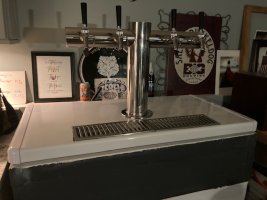Ok, first of all, I'm still a newbie brewer, but am hooked. I've got 5 batches currently on the go at various stages. I started with extract kits and now my last couple of batches were all-grain, using BIAB system.
I was in a local homebrew shop last week, and they have a used Grainfather G30 Connect 110V that's nicely discounted from new, and looks to be in great shape.
Perhaps it's just my 'newbie zeal', but I'm tempted to buy it. But before pulling the trigger I thought I better ask more experienced brewers if it's worth it. So, my question:
1) Is an All-in-One system really better than BIAB, or is mostly just the convenience factor?
2) Will it improve my beer, or is BIAB just as good, assuming I've executed the BIAB process correctly?
Thanks in advance...
I was in a local homebrew shop last week, and they have a used Grainfather G30 Connect 110V that's nicely discounted from new, and looks to be in great shape.
Perhaps it's just my 'newbie zeal', but I'm tempted to buy it. But before pulling the trigger I thought I better ask more experienced brewers if it's worth it. So, my question:
1) Is an All-in-One system really better than BIAB, or is mostly just the convenience factor?
2) Will it improve my beer, or is BIAB just as good, assuming I've executed the BIAB process correctly?
Thanks in advance...





